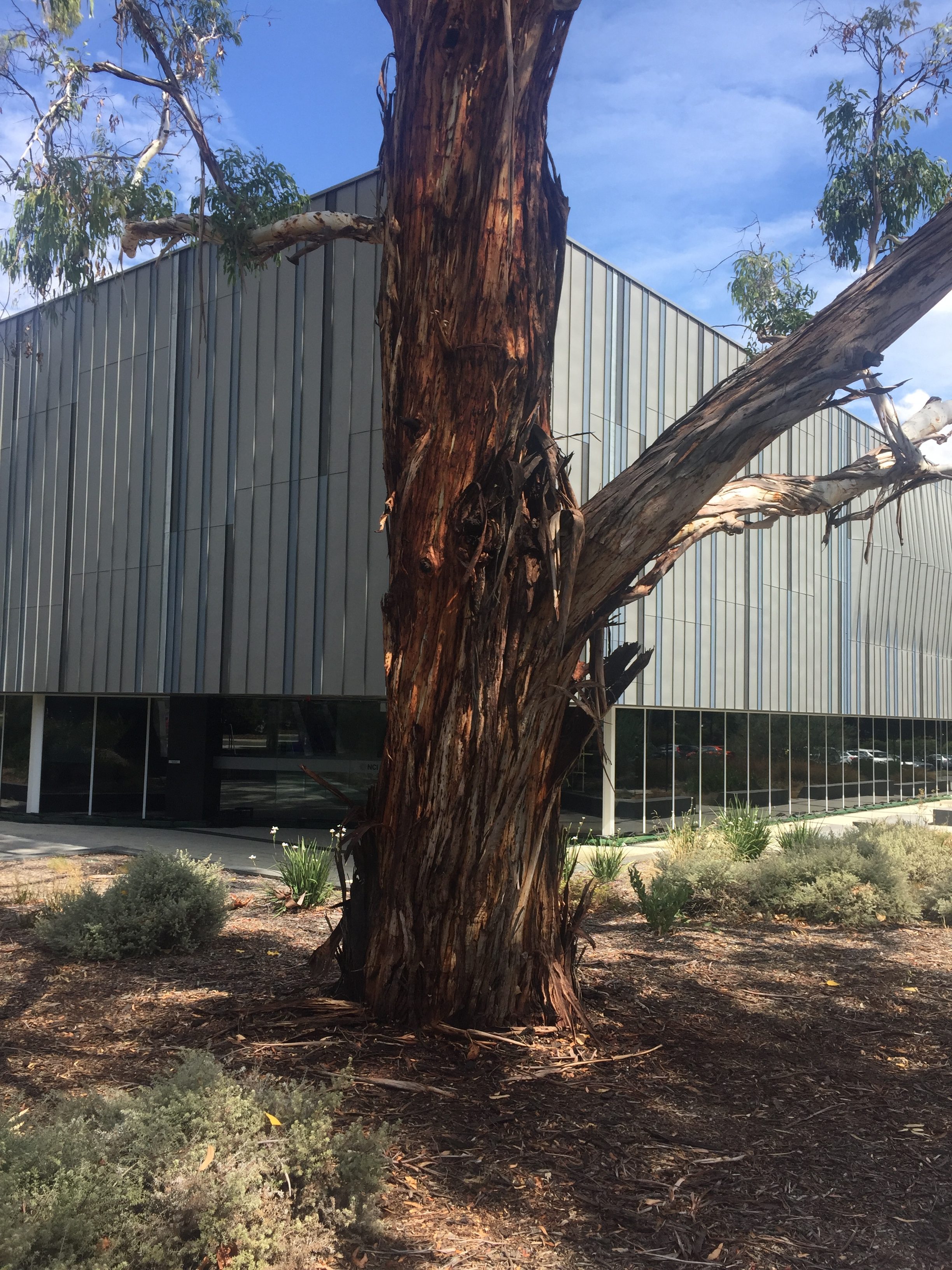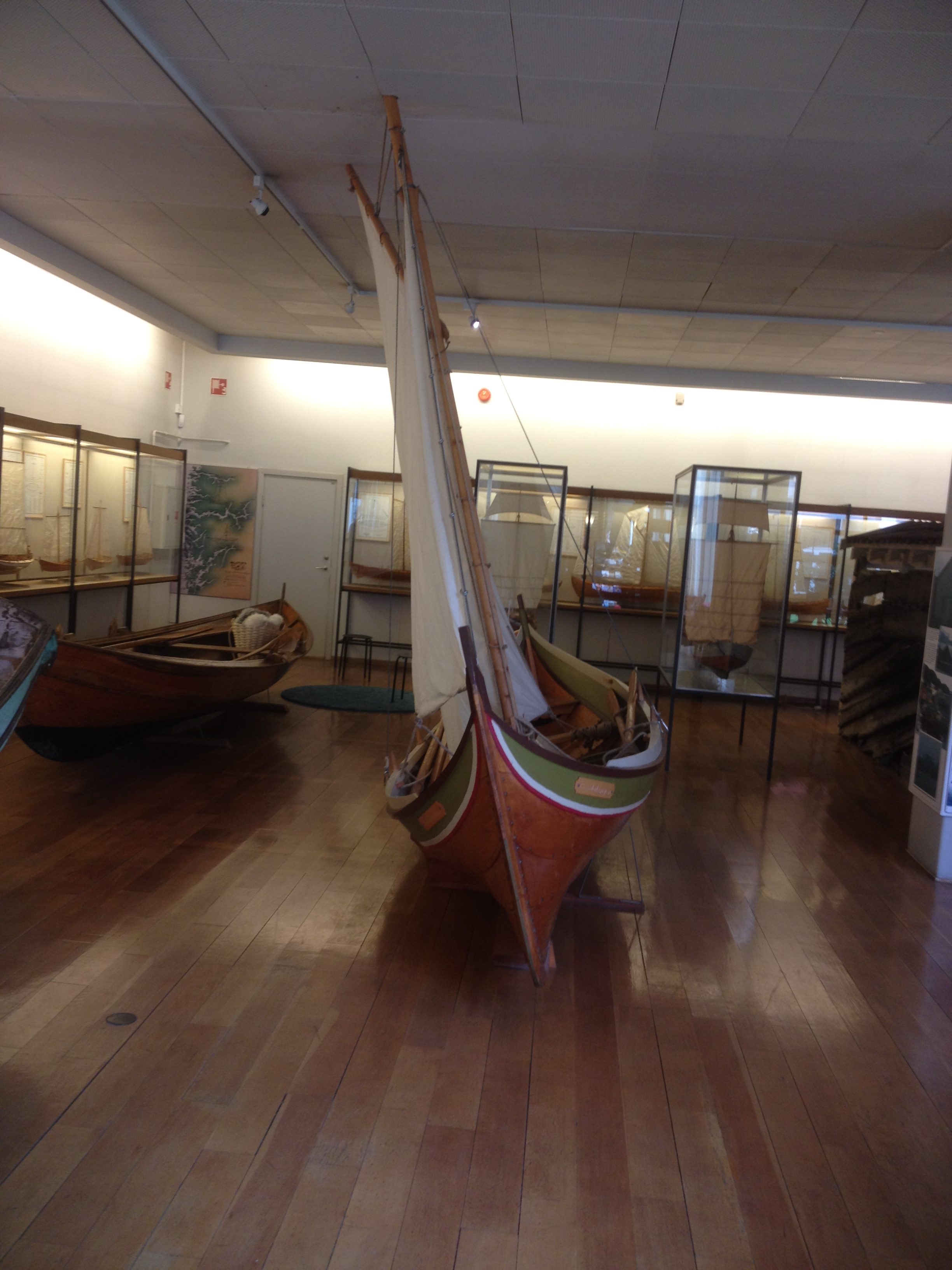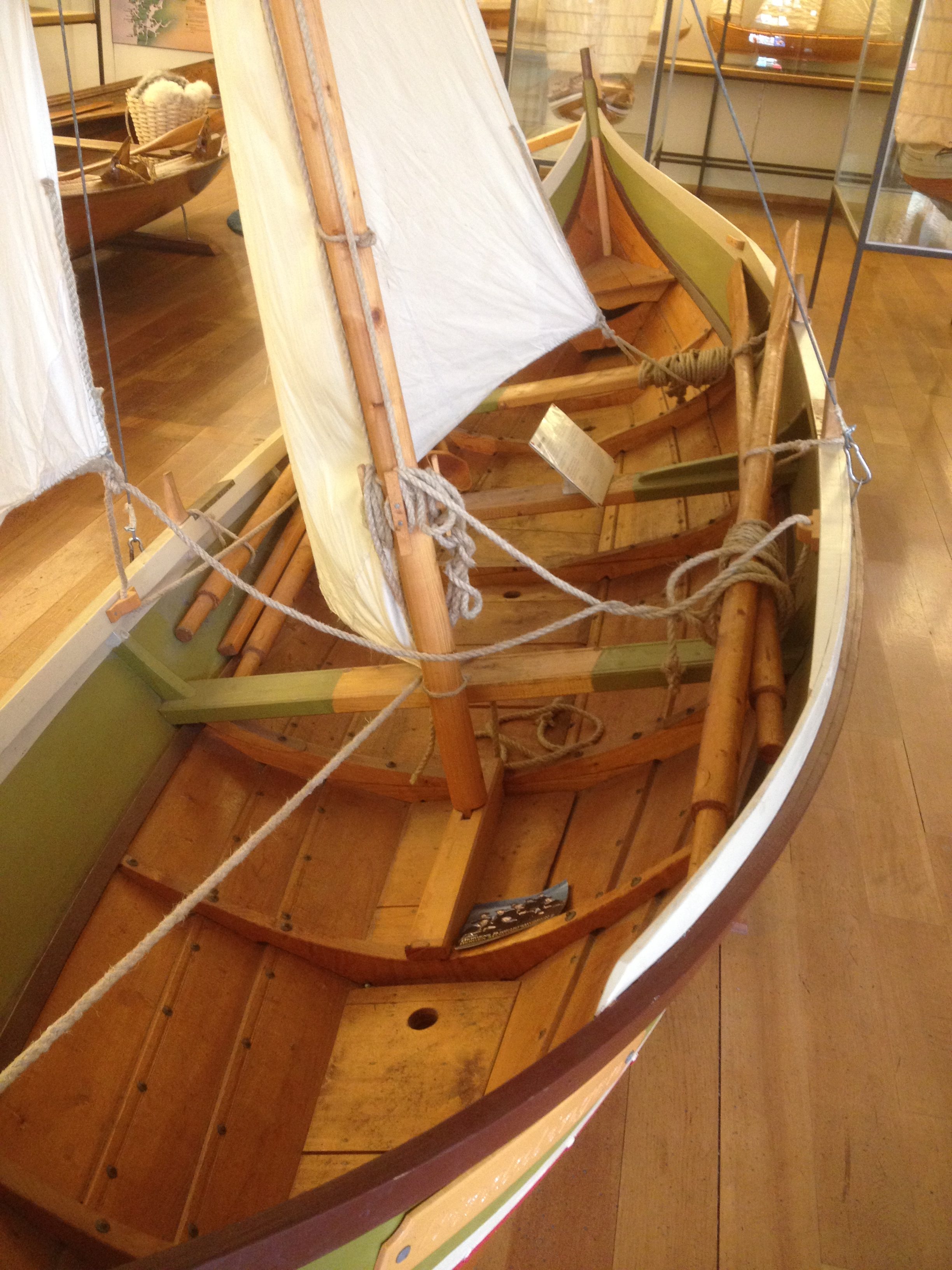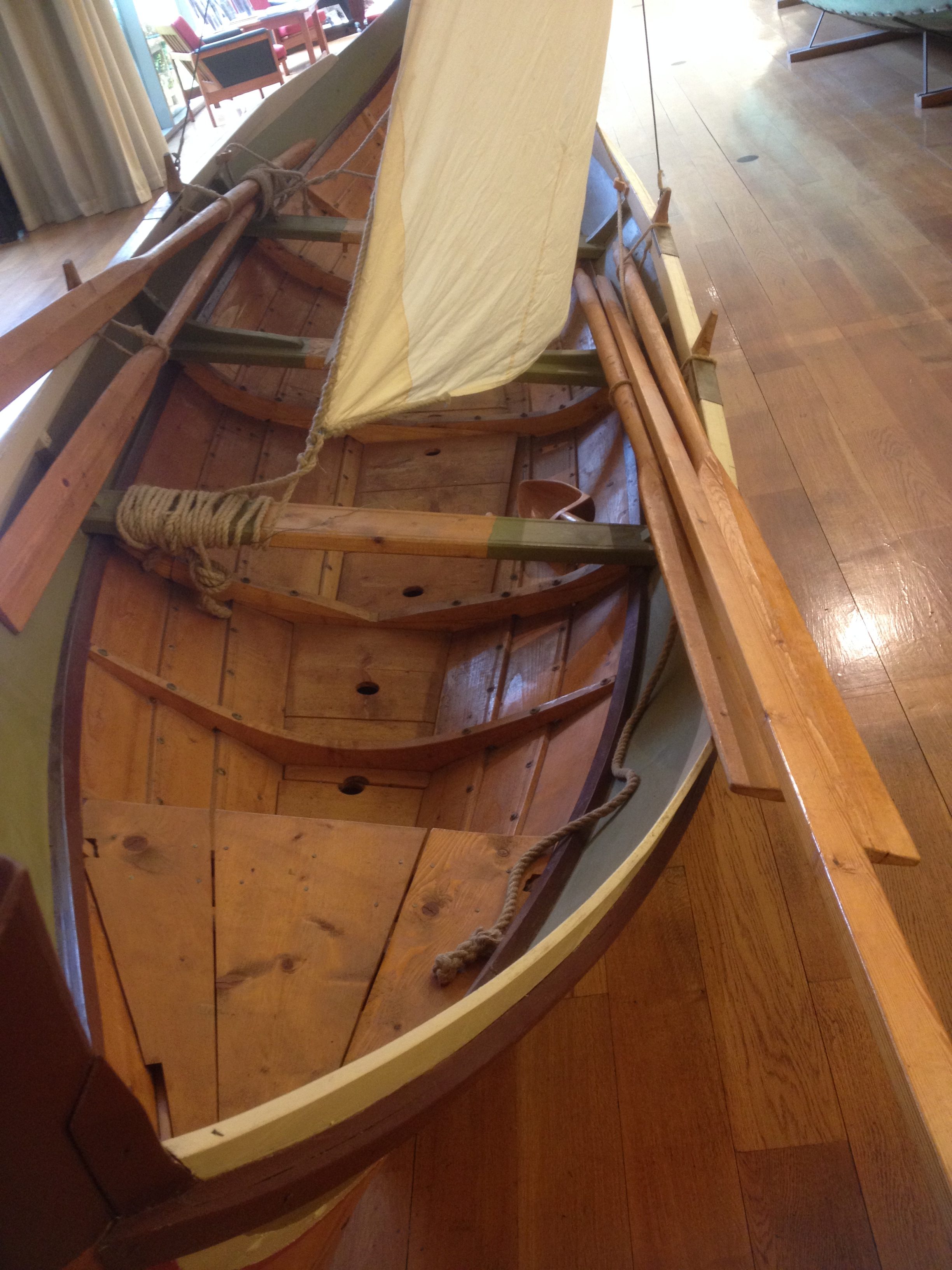My favourite library on ANU campus is the Menzies Library, named for the Australian Prime Minister Sir Robert Gordon Menzies who laid the foundation stone, and which holds collections in Asia Pacific and Far East – history, anthropology, politics and international relations, literature and language, religion and philosophy. It’s a heritage-listed building and rightly so. Its stone elevations are massive, splayed at the base, recalling ancient stone structures, and sweep up to the glass arcades of the ground floor.
There are bronze panels embedded in the oval arcades, each unique, beautifully rendered, recalling the shed bark strips of different species of eucalypts that stand around the building, indeed all over campus.
The panels also function as sun screens, scattering the light inside. Approaching the library entrance, the slender pillars are ingeniously chamfered at the base, creating a sense of delicate entasis without increasing the size of the pillars. They support a spreading roof canopy of the glass and bronze ovals, and the whole entrance seems to float in front of the massive walls to the side, and the library block of book stacks to the right and behind. The steps are generous, well-spaced, the entrance cool, with large blocks of stone well-laid in the floor. The entry hall gives a sense of calm horizontal space, and the detail of the ceiling and the use of glass for interior walls make it seem larger again. Your spirits rise.
To the left as you enter there is a canoe with outrigger, lying at an angle to your entrance, as if drawn up on the beach. It’s a canoe from the Kiribati Islands.
It’s both a work of art and a fascinating technological object, used for fishing and inter-island travel, but also for ocean sailing, on voyages of hundreds of kilometres in open ocean. It’s built entirely of local materials on islands that are for the most part atolls, from driftwood and local trees, and the hull timbers are sewn together using coconut fibre sennits created by women to specific lengths, and using specific knots, and sealed with glue from the breadfruit tree. The sennits are set flush with the surface of the hull, inside and out, minimising abrasion:
The same materials and crafts are used to construct the outrigger and tie it to the canoe:
The hull is built as a double-end, so the canoe can be sailed from either end; and the lines are elegant, built for speed and accurate handling, and for sailing close to the wind.
The keel and its prows are built straight by aligning them with the only straight line available to boat-builders on an atoll — the horizon. And the curve of the hull is asymmetrical. Look again at the first photo above. You’ll see that the line of the bulwark adjacent to the outrigger curves more than the leaner line on the opposite side. The boat-building skills and their cultural contexts are summarised well by the explanatory text set beside the canoe.
In technology and art, the canoe and the Menzies Library might seem to be as distant from each other as it’s possible to be, and yet it seemed to me that they complement each other. Of course the Library is a much more knowing object, constructed with cultural and nature references beyond its function, and all the richer, functionally, as a Library because form doesn’t follow function. The canoe’s remarkable beauty arises from function, but also from its rich cultural embedding in Kiribati culture which, to a complete outsider like me, raises so many interesting questions – how long had canoes been built like this, how was knowledge passed down among women and elders, how were good boat-builders identified by the community and trained by elders, how did islanders train and provision themselves for long voyages, how were canoe sizes matched to length of voyages, how was ocean navigation learned and passed on, how is our contemporary GPS technologies affecting islanders’ navigational skills of open ocean sailing, and many more.
But the canoe fascinated me in other ways. It reminded me of a visit to Bergen, where Nicola and I discovered the Bergen Boat Museum, crammed with full-scale and model boats from Norway’s seafaring past –
The boats used for fishing and sea voyages were exquisitely built, using craft knowledge and skills –
– and among whose descendants are the yoles of Orkney, the building of which you can see here. These boats can’t be understood until we understand the lives and activities of the builders and those who sailed them.
So what links boats, libraries and legal education? Three issues: design and culture, function and aesthetics, and education. On the first, it’s not enough recognised in legal education that culture gives rise to the designs we use. We still don’t have persuasive analytical histories of the forms of teaching we use, and the theoretical bases upon which we might carry out such histories has scarcely been investigated. Could we attempt a phenomenographic account? Could we apply the equivalent of Callon & Latour’s actor network theory? The same is true of legal education regulation, its design and culture. By comparison, professional legal regulation is much better understood than the regulation of legal education.
Function and aesthetics, a topic well understood and explored in aesthetics since ancient times and education generally in the modern period, is hardly ever addressed in legal education. Recent applications include the investigations of learning space, eg my chapter in the Affect book; and in the fine critical work of Andreas Philippopoulos-Mihalopoulos on learning spaces; but at a time when physical spaces are coming under pressure more than ever on campuses, and when the effects of the aesthetics of digital spaces are scarcely if ever considered, there is a need to explore this topic quite urgently.
Boat-builders and library architects need educating before they build their objects. In many ways the education of Kiribati boat-builders and the education of the architects of the Menzies Library must surely stand at opposite extremes of schooling traditions. Both, though, are profound, detailed methods of induction into the art, epistemology, values and science of object-making. The education of legal educators in their craft by comparison has always been unregarded, weak and shallow; and disturbingly, randomly varied; and the forms it takes are too often ineffective and hard to maintain. In over 25 years of working and learning in legal education I’ve always found that the best legal education sessions, the ones I remember and draw most from, are the informal workshops where radical work or theory was presented, discussed, challenged in open sessions. What we need is the equivalent of sitting down and discussing the canoe, listening to elders of the discipline describe its shape and purpose, taking part in its build, discussing how we can build better, given new local circumstances. We need to spend time drafting plans, and think more of who will inhabit our teaching spaces, and how the architecture of those spaces can raise spirits, inspire, draw students into the architecture of justice itself.












